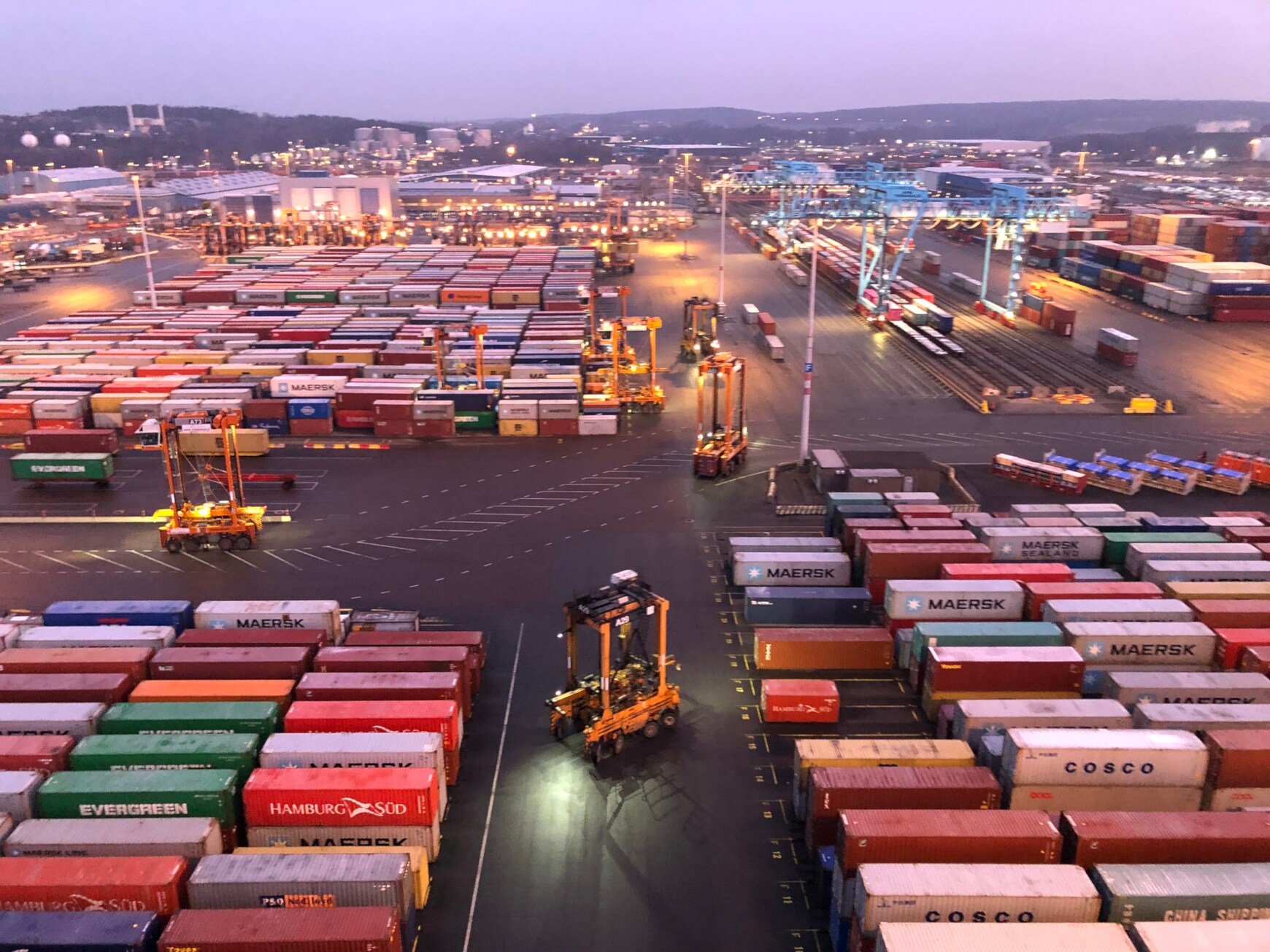
02/03/21
Electrolux volumes via APM Terminals Gothenburg expected to increase substantially in 2021
 Anders Linnarsson, Head of Electrolux Logistics AB explains how the coronavirus pandemic has affected the company and changed purchasing patterns, and how he views the future of logistics flows. A customer of APM Terminals Gothenburg, Linnarsson is responsible for all warehouse management and distribution in the Nordic region.
Anders Linnarsson, Head of Electrolux Logistics AB explains how the coronavirus pandemic has affected the company and changed purchasing patterns, and how he views the future of logistics flows. A customer of APM Terminals Gothenburg, Linnarsson is responsible for all warehouse management and distribution in the Nordic region.
In your role of Head of Logistics what are the biggest challenges right now?
We have a very high demand for white goods in the industry. It is important for us to be flexible, to take in as much as we can to our warehouses and to ship out on time. This is a consequence of the coronavirus pandemic. Initially, we experienced a major drop in sales throughout Europe, but demand has now increased enormously since the summer.
Have you seen any changes in purchasing patterns during the coronavirus pandemic?
When the pandemic hit, the entire Electrolux Group quickly realised that e-commerce would increase dramatically everywhere. We have therefore focused on expanding e-commerce in all European countries. For example, we have rolled out our own e-commerce platform in the Nordic region. The plans had been in the making for a long time, but they accelerated due to the pandemic.
How have you developed your logistics flow and e-commerce logistics in recent years?
It is primarily the e-commerce logistics flow that has been developed. Over the past three years, we have worked hard to ensure sufficient capacity and flow through our warehouses in the Nordic region. We have now come a long way in creating an even more agile and customer-oriented logistics organization and platform.
How do you work with climate-smart logistics?
We are prioritizing investments in rail and intermodal transport over truck transport. With our large volumes, rail is very advantageous for us. Like all major warehouses, we depend on both rail and truck flows to handle all necessary unloading capacity. In the Nordic region, just over half of the flow from our factories in Europe goes directly to our large customers without passing through interim storage facilities, such as Mariestad. We also have other central initiatives such as Zero Landfill, CO2 reduction and other energy-saving measures.
What is your view on the future of logistics flows?
When it comes to our large customers in the B2B flow, we have to be able to keep our promises and deliver the volume they have ordered. Our factories in Europe and the factories we outsource to in other regions must be able to produce the volumes the market demands.
What are the most important prerequisites for you to succeed with your logistics?
For our logistics to succeed, we need to respond to the increased demands for sustainability, and we need to work with our carriers and distributors to set requirements. This enables us to offer environmentally friendly deliveries and gain a competitive advantage. Soon we will start using electrified heavy transport from our warehouses to meet future demands and ways of transporting goods. We will also need to have a sufficiently flexible IT process so that information systems can keep up with the ever-changing reality in which we live and work.
How do you view transporting freight by sea?
It's a flow that's climate-efficient but less flexible. The majority of our small appliances and well-being products are shipped by sea from Asia. Things work smoothly with the port in Gothenburg. The most important thing is to keep port operations running without disruption, so it does not affect the flow of goods. I also think it is important that transport buyers collectively put pressure on shipping companies to develop better fuels and minimize emissions.
What is your current flow of goods via APM Terminals in Gothenburg?
We have about 800 TEUs per year, which will increase substantially in 2021. We work with shipping companies directly and centrally. They are instrumental in ensuring we get our containers to our warehouses.